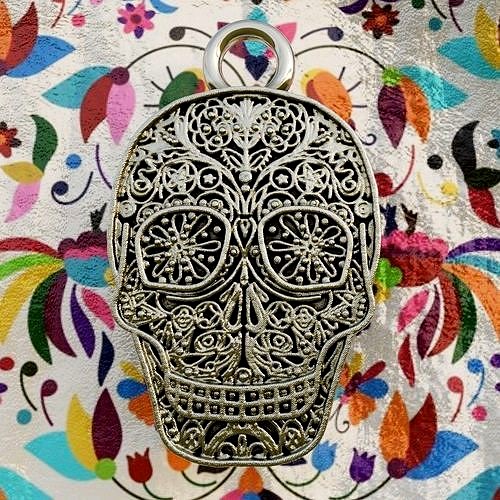CG Trader

calaverita pendant - skull pendant | 3D
by CG Trader
Last crawled date: 3 years, 2 months ago
mexico´s day of the dead calaverita pendant
Z axis 36.4 mm
Y axis 2.7 mm
X axis 22.1 mm Traditional production methods have been in use since roughly the 15th century. The process involves using molds to cast the calaveras. Production can be a lengthy process: a craftsman will usually spend roughly four to six months producing the skulls for a season. Traditionally made sugar skulls are considered folk art and are not meant to be consumed. The production process is more focused on the aesthetic appeal of the skull than on the taste or food safety of the product. Furthermore, many calaveras feature inedible decorations, such as beads, feathers, and foil. Some skulls were formerly decorated with sombreros, although these designs have mostly disappeared since the 1970s. The calaveras are traditionally sold at outdoor market stalls beginning two weeks before the Day of the Dead.[citation needed] Sugar skulls offered for sale in Mexico. Large sugar skull offered for sale in Mexico. Calaveritas (little skulls) made of chocolate and sugar for sale in Mexico.
Other calaveras are produced to be edible. Most are cast as one piece from cane sugar, which can either be left unflavored or else flavored with vanilla. Some calaveras are also made from chocolate. The calaveras are typically colored with vegetable dyes. As with the more decorative calaveras, these will sometimes have names written on the foreheads, as well. Calaveras may be eaten, or kept for a few days and then thrown away. calaverita skull dayofthedead folk art mexican mexico mexica mexicamexico pendant jewelry charm sugar pendants
Z axis 36.4 mm
Y axis 2.7 mm
X axis 22.1 mm Traditional production methods have been in use since roughly the 15th century. The process involves using molds to cast the calaveras. Production can be a lengthy process: a craftsman will usually spend roughly four to six months producing the skulls for a season. Traditionally made sugar skulls are considered folk art and are not meant to be consumed. The production process is more focused on the aesthetic appeal of the skull than on the taste or food safety of the product. Furthermore, many calaveras feature inedible decorations, such as beads, feathers, and foil. Some skulls were formerly decorated with sombreros, although these designs have mostly disappeared since the 1970s. The calaveras are traditionally sold at outdoor market stalls beginning two weeks before the Day of the Dead.[citation needed] Sugar skulls offered for sale in Mexico. Large sugar skull offered for sale in Mexico. Calaveritas (little skulls) made of chocolate and sugar for sale in Mexico.
Other calaveras are produced to be edible. Most are cast as one piece from cane sugar, which can either be left unflavored or else flavored with vanilla. Some calaveras are also made from chocolate. The calaveras are typically colored with vegetable dyes. As with the more decorative calaveras, these will sometimes have names written on the foreheads, as well. Calaveras may be eaten, or kept for a few days and then thrown away. calaverita skull dayofthedead folk art mexican mexico mexica mexicamexico pendant jewelry charm sugar pendants
